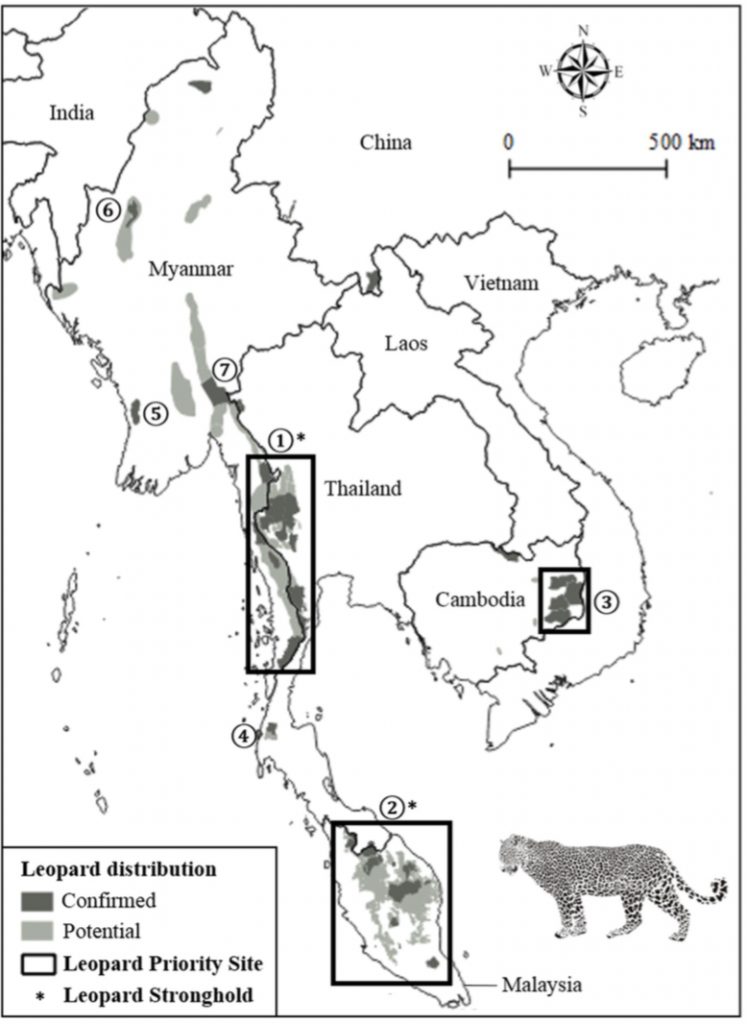Tony Lynam, chair of the ATBC’s Asia-Pacific Chapter and colleagues just published an article that describes the current conservation status of leopards in Southeast Asia. While most of the focus has been on recovering tigers in recent years, leopards have declined too, and they now occupy only 6% of their historical range (like tigers). The study was led by Susana Rostro-Garcia and Jan Kamler using field survey data collected by a number of us from around the region.
There are now only two landscapes that have long-term potential as refuges for leopards; Peninsular Malaysia and Northern Tenasserim Forest Complex on the Thai-Myanmar border. The Eastern Plains of Cambodia has an additional small isolated population. In the paper they propose a review of the IUCN Red List status of leopards and suggest it might be upgraded to Endangered, along with other specific management recommendations.

The current (confirmed and potential) estimated distribution of the Indochinese leopard (Panthera pardus delacouri) in Southeast Asia. The areas surrounded by rectangles indicate leopard priority sites: (1) Northern Tenasserim Forest Complex; (2) Peninsular Malaysia, and; (3) Eastern Plains Landscape; whereas the asterisks indicate the two leopard strongholds. Other sites with potentially viable populations are: (4) Khlong Saeng-Khao Sok Complex; (5) Rakhine Yoma Elephant Range WS; (6) Alaungdaw Kathapa-Mahamyaing complex, and; (7) northern Karen (Kayin) State. S. Rostro-García et al. / Biological Conservation 201 (2016) 293–300



